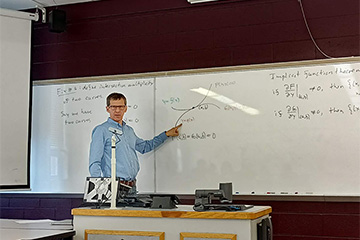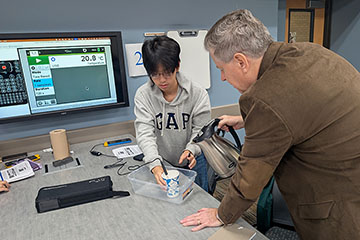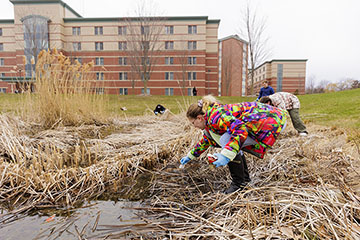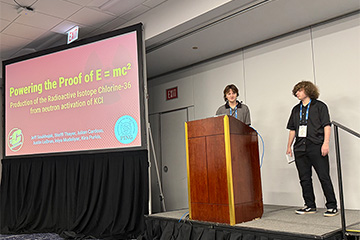Researching the Ribbits
Travis Rainey, a graduate student in the Biology Department, receives a grant to further his research on the threatened Blanchard’s Cricket Frog
 Travis Rainey, a graduate student in the Biology Department, investigates the threatened Blanchard’s Cricket Frog (Acris blanchardi) in Michigan for his thesis. The species has been experiencing a decline in population since the 1970s around the northern edge of their range, which is in Michigan. Agrochemicals and predatory fish introduced to the area contribute to the declining population. Rainey intends to study the species’ population structure and interaction with the environment. To fund his research, Rainey received a grant of $13,200 from the Pierce Cedar Creek Institute (PCCI) for environmental education.
Travis Rainey, a graduate student in the Biology Department, investigates the threatened Blanchard’s Cricket Frog (Acris blanchardi) in Michigan for his thesis. The species has been experiencing a decline in population since the 1970s around the northern edge of their range, which is in Michigan. Agrochemicals and predatory fish introduced to the area contribute to the declining population. Rainey intends to study the species’ population structure and interaction with the environment. To fund his research, Rainey received a grant of $13,200 from the Pierce Cedar Creek Institute (PCCI) for environmental education.
The purpose of the Pierce Cedar Creek Institute is to “enhance the health and stability of ecosystem in West Michigan by providing scientific information to support land management decisions.” Rainey is expected to present his findings to the PCCI, submit a final report of his findings to be reviewed, participate in summer research program activities, and provide data during his study. Rainey also hopes to publish in peer-reviewed journals.
 Rainey came to CMU with an interest in amphibian conservation. Through a literature review, Rainey found that there were a few factors contributing to the Blanchard’s Cricket Frog’s decline, but there was no complete explanation for the scale of these declines. Upon this discovery, he set out to conduct surveys across Michigan to discover how many populations remain. Under the supervision of Kirsten Nicholson, Ph.D., Rainey began to develop other questions during these surveys:
Rainey came to CMU with an interest in amphibian conservation. Through a literature review, Rainey found that there were a few factors contributing to the Blanchard’s Cricket Frog’s decline, but there was no complete explanation for the scale of these declines. Upon this discovery, he set out to conduct surveys across Michigan to discover how many populations remain. Under the supervision of Kirsten Nicholson, Ph.D., Rainey began to develop other questions during these surveys:
Are these tiny frogs able to migrate across highways and forest patches to neighboring ponds?
Are the seemingly isolated populations inbred?
Does breeding occur only within a given pond, or are migrants able to spread genetic material across Michigan’s highly fragmented landscapes?
Finding answers to these questions motivated Rainey to continue his thesis research, despite having little experience with genetic methods. With the funding from PCCI, Rainey will go out to collect genetic material and extract DNA from these samples to look at portions of DNA across different frogs and populations. This genetic data will help Rainey better understand how many genetically unique populations exist within Michigan and how landscape features affect dispersal and gene flow.




